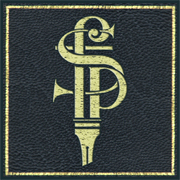We are endlessly copying. From the hidden cave paintings to the attempts to perfect almost photographic images in oils human beings love to imitate what they see around them. The drive to copy infests science where study of plants and animals has given us new ways of dealing with the physics of living and new materials to help us do things we otherwise could never do. And when we cannot immediately copy the materials we derive something to aim for – such as the hair assemblies on spiders’ legs that enable them to climb vertically.
And when we invented photography, that greatest imitator of the world, we found our art veered away from the perfect image into the surreal and impressionist because what we had actually discovered was that imitating is an art form in all its guises. That this drive to realise the world in other ways is the individual’s expression of their understanding, their way of uncovering truths and communicating revelation to other people.
It’s a bold experiment to copy creation and it comes at a cost because as I sit here I see carved elephants on my bookcase and I worry that one day all we will have are the works of art and the imitations, and we will have destroyed the wonder and inspiration of the real.
